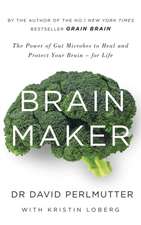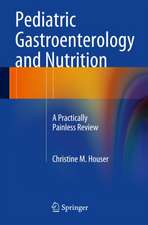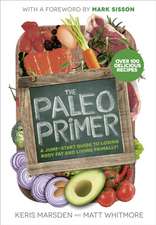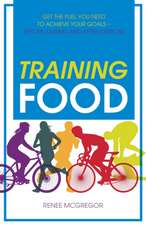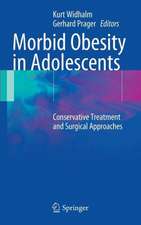Geriatric: Nutrition Handbook
Autor Stephen Bartlett, Mary Marian, Douglas Taren, Myra L. Muramotoen Limba Engleză Paperback – 30 noi 1997
Preț: 705.83 lei
Preț vechi: 742.98 lei
-5% Nou
Puncte Express: 1059
Preț estimativ în valută:
135.08€ • 140.50$ • 111.51£
135.08€ • 140.50$ • 111.51£
Carte tipărită la comandă
Livrare economică 15-29 aprilie
Preluare comenzi: 021 569.72.76
Specificații
ISBN-13: 9780412136412
ISBN-10: 0412136414
Pagini: 200
Ilustrații: 200 p.
Dimensiuni: 127 x 203 x 13 mm
Greutate: 0.17 kg
Ediția:1998
Editura: SPRINGER NETHERLANDS
Colecția Springer
Locul publicării:Dordrecht, Netherlands
ISBN-10: 0412136414
Pagini: 200
Ilustrații: 200 p.
Dimensiuni: 127 x 203 x 13 mm
Greutate: 0.17 kg
Ediția:1998
Editura: SPRINGER NETHERLANDS
Colecția Springer
Locul publicării:Dordrecht, Netherlands
Public țintă
ResearchCuprins
Section 1 Geriatric Nutrition.- Geriatric Nutrition.- T.1.1 Effects of Aging on Factors Influencing Nutritional Status.- Recommended Dietary Allowances for The Elderly.- Section 2 Nutritional Status Assessment.- Nutritional Status Assessment.- Diet History and Evaluation, Including Socioeconomic and Functional Status.- Anthropometric Measurements.- Biochemical Evaluation.- Nutritional Physical Evaluation.- Determining Nutritional Requirements.- Section 3 Impact of Medications on Nutritional Status in the Elderly.- Impact of Medications on Nutritional Status in the Elderly.- Section 4 Screening for Nutritional Risk.- Screening for Nutritional Risk.- OBRA Regulations and Other Nutritional Screening Forms.- Section 5 Nutrition in the Prevention and Treatment of Disease.- Nutrition Prescriptions.- AIDS/HIV.- Alcoholism.- Alzheimer’s Disease.- Anemia.- Arthritis (aka Degenerative Joint Disease).- Cancer.- Cerebrovascular Accident (aka Stroke).- Chronic Obstructive Pulmonary Disease.- Congestive Heart Failure.- Coronary Artery Disease/Cardiovascular Disease.- Diabetes Mellitus: Types I and II.- Diverticular Disease.- Gallbladder Disease.- Geriatric Failure to Thrive.- Hepatic Disease.- Hypertension.- Obesity.- Osteoporosis.- Parkinson’s Disease.- Pressure Ulcers.- Renal Failure: Acute.- Renal Failure: Chronic.- Sports Nutrition.- Section 6 Nutritional Intervention in Common Medical Problems.- Constipation.- Chewing Problems and Dyspi-Iagia.- Self-Feeding Problems.- Nutritional Supplementation.- Commercial Nutritional Supplements.- Multivitamin and Mineral Supplementation.- Section 7 Dietary Guidelines for the Elderly.- Dietary Guidelines for the Elderly.- Food Guide Pyramid.- Section 8 Food Sources of Nutrients.- Food Sources of Nutrients.- Macronutrient Content of Foodsby Food Group.- Section 9 Nutritional Resources for the Elderly.- National Organizations.- References and Suggested Readings.



